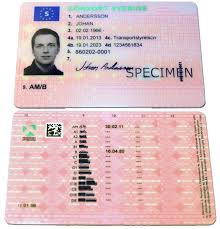Why You're Failing At Road Crossing Photo Traffic Authority
페이지 정보

본문
Road Crossing Photo Traffic Authority
Road crossing photo traffic authority is a powerful tool that communities can release at crossways in high-risk areas to improve safety for everybody. To utilize photo enforcement, an intersection needs to have a stop line or crosswalk and be located in a highway work zone, school crossing zone or high-risk crossway section.
Pedestrians
A pedestrian's best location to cross a road is at a marked crossing or crossway. In addition, the Governor's Highway Safety Association reports that pedestrians are usually killed by drivers who are turning left or crossing the road during the night. The association recommends pedestrians prevent strolling on roads with rush hour.
Pedestrians need to always use intense noticeable clothes when out walking on streets, sidewalks or shared courses (areas designated for pedestrian and bicycle use). They ought to likewise look both ways before stepping onto the street and make certain automobiles have stopped before they cross. If you're utilizing a wheelchair or förnya körkort pris KöRkortstillståNd; Eric1819.Com, mobility scooter, make certain the wheels are locked to avoid it from rolling into the street.
When strolling on a road, pedestrians need to stay as near the pathway as possible to allow easy access to shops and structures. When there's no walkway, walk on the best side dealing with traffic to guarantee automobiles can see you. If you're walking in front of a store, raise your hand when you enter and leave to alert drivers to your existence.
 Even when using a marked crosswalk or crossway, you should still look both methods before crossing the street. Drivers may be sidetracked, particularly if they're using a phone or listening to music. Also, a car's turn signal might be flashing, however if the driver hasn't inspected to see whether there are any pedestrians in his lane or on the other side of the street, he can inadvertently become them and hit them.
Even when using a marked crosswalk or crossway, you should still look both methods before crossing the street. Drivers may be sidetracked, particularly if they're using a phone or listening to music. Also, a car's turn signal might be flashing, however if the driver hasn't inspected to see whether there are any pedestrians in his lane or on the other side of the street, he can inadvertently become them and hit them.
Some roadways threaten for pedestrians, consisting of arterial roadways that connect town hall to freeways and expressways. These routes have many lanes and a range of speeds, making it difficult for drivers to expect pedestrians. Likewise, bigger cars such as buses, trucks and SUVs obstruct pedestrians' view of the highway.
Pedestrians should never ever stroll on limited-access roadways or their entrance or off ramp, and they should be really careful when walking a roundabout. Pedestrians can securely cross roundabouts by using one of the splitter islands in between the 2 various directions of traffic. If you're not sure of how to securely cross, ask the regional authorities department for suggestions. FHWA is working to enhance pedestrian crossings through STEP Studio, a toolbox that offers a selection of countermeasures for specific locations and conditions.
Pedestrian Signals
 Pedestrian signals separate pedestrians from traffic and control their crossing of hectic intersections. The signals are activated by a pedestrian pushing a button that puts a call into the signal controller. The signal controller then cycles through the phasing sequence to reach the suitable phase for the pedestrians' needs.
Pedestrian signals separate pedestrians from traffic and control their crossing of hectic intersections. The signals are activated by a pedestrian pushing a button that puts a call into the signal controller. The signal controller then cycles through the phasing sequence to reach the suitable phase for the pedestrians' needs.
Normally, the very first time the pedestrian signal cycled through its series, it would display the WALK or strolling person symbol and remain on for at least 4 to 7 seconds. During this time, pedestrians are permitted to leave the curb and start their crossing. The WALK indicator need to be constant and noticeable to all pedestrians, including those with vision disabilities.
In addition, the signal might consist of a countdown timer that shows the variety of seconds staying in the flashing DON'T WALK period for completing the crossing. Some blind and aesthetically impaired individuals feel that this details is unneeded because it can disrupt their capability to hear approaching vehicles.
The signal may likewise be configured for unique pedestrian phasing, which permits pedestrians to cross only when there is no or very little vehicle traffic. This is beneficial to some pedestrians who have movement or cognitive disabilities. Exclusive pedestrian phasing is just possible at certain times of the day and night, however, and can just be executed in specific places.
Some pedestrian signals are synchronized with the car traffic signal system to offer coordinated operations. Pedestrians must be wary of this because there is the capacity for a baffled signal and a dangerous situation that might result in an uncontrolled crossing.
To be safe, trafikverket Körkortsfoto a pedestrian should always listen to the APS and traffic, especially preliminary parallel car movements, to ensure that their directional walk indication (On Your Mark!) and/or speech walking individual signal associates with the traffic situation. It is likewise a good concept to find the location of the tactile arrow on the APS and confirm that it is pointing in the direction of the intended location street. This will help the pedestrian to enter position and align with the ADA-required flat face on the pushbutton, and to maintain positioning throughout their crossing.
Traffic Control Devices
Traffic control devices help keep the flow of traffic moving at intersections and other crucial locations. They include signal lights, electronic message boards, traffic indications and barriers. In addition, they can consist of warnings and guidance indications that assistance drivers stay safe. For instance, a warning indication may notify drivers of upcoming pedestrian crossings or building zones, assisting to avoid high-speed accidents.
A signal light is an important tool for handling the circulation of traffic at crossways, where cars come from various directions and should be merged. They use green, yellow and red lights to guide drivers and pedestrians. They can likewise feature flashing lights or a bell to warn pedestrians of the presence of inbound vehicles.
Advanced innovation is making traffic control devices more effective, with smart systems that adjust in genuine time based upon road conditions. These systems minimize congestion and improve safety by allowing pedestrians to cross the road before traffic resumes.
These systems use sensors to identify pedestrians and activate the traffic signals at the right time. They are developed to provide concern to pedestrians, emergency situation and mass transit cars. They are often found at airport runways and other busy intersections.
For example, in Perth, Australia, a gadget called the "Keywalk" allows handicapped people to extend the walk phase of a traffic signal. This system was developed in reaction to concerns of special needs supporters who desired disabled people to be able to cross the highway safely.
While these gadgets are not as obvious as traffic lights, they are just as important to road safety. Without them, drivers and pedestrians could get injured by unpredictable driving or KöRkorsfoto Trafikverket - Writeablog.Net, other threats.
The Manual on Uniform Traffic Control Devices (MUTCD) supplies the standards used by road supervisors across the country to install and preserve traffic control devices. It is updated frequently to show brand-new advancements in the field. Staying up to date with the MUTCD can be challenging, however it is essential to the success of traffic management. The MUTCD News Feed supplies Interim Approvals, Official Interpretations, Policy Statements and Federal Register notices for road supervisors. It can be accessed online, and it can be registered for so that you receive updates immediately.
Road crossing photo traffic authority is a powerful tool that communities can release at crossways in high-risk areas to improve safety for everybody. To utilize photo enforcement, an intersection needs to have a stop line or crosswalk and be located in a highway work zone, school crossing zone or high-risk crossway section.
Pedestrians
A pedestrian's best location to cross a road is at a marked crossing or crossway. In addition, the Governor's Highway Safety Association reports that pedestrians are usually killed by drivers who are turning left or crossing the road during the night. The association recommends pedestrians prevent strolling on roads with rush hour.
Pedestrians need to always use intense noticeable clothes when out walking on streets, sidewalks or shared courses (areas designated for pedestrian and bicycle use). They ought to likewise look both ways before stepping onto the street and make certain automobiles have stopped before they cross. If you're utilizing a wheelchair or förnya körkort pris KöRkortstillståNd; Eric1819.Com, mobility scooter, make certain the wheels are locked to avoid it from rolling into the street.
When strolling on a road, pedestrians need to stay as near the pathway as possible to allow easy access to shops and structures. When there's no walkway, walk on the best side dealing with traffic to guarantee automobiles can see you. If you're walking in front of a store, raise your hand when you enter and leave to alert drivers to your existence.
 Even when using a marked crosswalk or crossway, you should still look both methods before crossing the street. Drivers may be sidetracked, particularly if they're using a phone or listening to music. Also, a car's turn signal might be flashing, however if the driver hasn't inspected to see whether there are any pedestrians in his lane or on the other side of the street, he can inadvertently become them and hit them.
Even when using a marked crosswalk or crossway, you should still look both methods before crossing the street. Drivers may be sidetracked, particularly if they're using a phone or listening to music. Also, a car's turn signal might be flashing, however if the driver hasn't inspected to see whether there are any pedestrians in his lane or on the other side of the street, he can inadvertently become them and hit them.Some roadways threaten for pedestrians, consisting of arterial roadways that connect town hall to freeways and expressways. These routes have many lanes and a range of speeds, making it difficult for drivers to expect pedestrians. Likewise, bigger cars such as buses, trucks and SUVs obstruct pedestrians' view of the highway.
Pedestrians should never ever stroll on limited-access roadways or their entrance or off ramp, and they should be really careful when walking a roundabout. Pedestrians can securely cross roundabouts by using one of the splitter islands in between the 2 various directions of traffic. If you're not sure of how to securely cross, ask the regional authorities department for suggestions. FHWA is working to enhance pedestrian crossings through STEP Studio, a toolbox that offers a selection of countermeasures for specific locations and conditions.
Pedestrian Signals
 Pedestrian signals separate pedestrians from traffic and control their crossing of hectic intersections. The signals are activated by a pedestrian pushing a button that puts a call into the signal controller. The signal controller then cycles through the phasing sequence to reach the suitable phase for the pedestrians' needs.
Pedestrian signals separate pedestrians from traffic and control their crossing of hectic intersections. The signals are activated by a pedestrian pushing a button that puts a call into the signal controller. The signal controller then cycles through the phasing sequence to reach the suitable phase for the pedestrians' needs.Normally, the very first time the pedestrian signal cycled through its series, it would display the WALK or strolling person symbol and remain on for at least 4 to 7 seconds. During this time, pedestrians are permitted to leave the curb and start their crossing. The WALK indicator need to be constant and noticeable to all pedestrians, including those with vision disabilities.
In addition, the signal might consist of a countdown timer that shows the variety of seconds staying in the flashing DON'T WALK period for completing the crossing. Some blind and aesthetically impaired individuals feel that this details is unneeded because it can disrupt their capability to hear approaching vehicles.
The signal may likewise be configured for unique pedestrian phasing, which permits pedestrians to cross only when there is no or very little vehicle traffic. This is beneficial to some pedestrians who have movement or cognitive disabilities. Exclusive pedestrian phasing is just possible at certain times of the day and night, however, and can just be executed in specific places.
Some pedestrian signals are synchronized with the car traffic signal system to offer coordinated operations. Pedestrians must be wary of this because there is the capacity for a baffled signal and a dangerous situation that might result in an uncontrolled crossing.
To be safe, trafikverket Körkortsfoto a pedestrian should always listen to the APS and traffic, especially preliminary parallel car movements, to ensure that their directional walk indication (On Your Mark!) and/or speech walking individual signal associates with the traffic situation. It is likewise a good concept to find the location of the tactile arrow on the APS and confirm that it is pointing in the direction of the intended location street. This will help the pedestrian to enter position and align with the ADA-required flat face on the pushbutton, and to maintain positioning throughout their crossing.
Traffic Control Devices
Traffic control devices help keep the flow of traffic moving at intersections and other crucial locations. They include signal lights, electronic message boards, traffic indications and barriers. In addition, they can consist of warnings and guidance indications that assistance drivers stay safe. For instance, a warning indication may notify drivers of upcoming pedestrian crossings or building zones, assisting to avoid high-speed accidents.
A signal light is an important tool for handling the circulation of traffic at crossways, where cars come from various directions and should be merged. They use green, yellow and red lights to guide drivers and pedestrians. They can likewise feature flashing lights or a bell to warn pedestrians of the presence of inbound vehicles.
Advanced innovation is making traffic control devices more effective, with smart systems that adjust in genuine time based upon road conditions. These systems minimize congestion and improve safety by allowing pedestrians to cross the road before traffic resumes.
These systems use sensors to identify pedestrians and activate the traffic signals at the right time. They are developed to provide concern to pedestrians, emergency situation and mass transit cars. They are often found at airport runways and other busy intersections.
For example, in Perth, Australia, a gadget called the "Keywalk" allows handicapped people to extend the walk phase of a traffic signal. This system was developed in reaction to concerns of special needs supporters who desired disabled people to be able to cross the highway safely.
While these gadgets are not as obvious as traffic lights, they are just as important to road safety. Without them, drivers and pedestrians could get injured by unpredictable driving or KöRkorsfoto Trafikverket - Writeablog.Net, other threats.
The Manual on Uniform Traffic Control Devices (MUTCD) supplies the standards used by road supervisors across the country to install and preserve traffic control devices. It is updated frequently to show brand-new advancements in the field. Staying up to date with the MUTCD can be challenging, however it is essential to the success of traffic management. The MUTCD News Feed supplies Interim Approvals, Official Interpretations, Policy Statements and Federal Register notices for road supervisors. It can be accessed online, and it can be registered for so that you receive updates immediately.
- 이전글The 10 Scariest Things About Power Tools Sale 25.02.05
- 다음글Travel Cot Bedside Crib Tools To Streamline Your Daily Life Travel Cot Bedside Crib Trick That Should Be Used By Everyone Be Able To 25.02.05
댓글목록
등록된 댓글이 없습니다.


